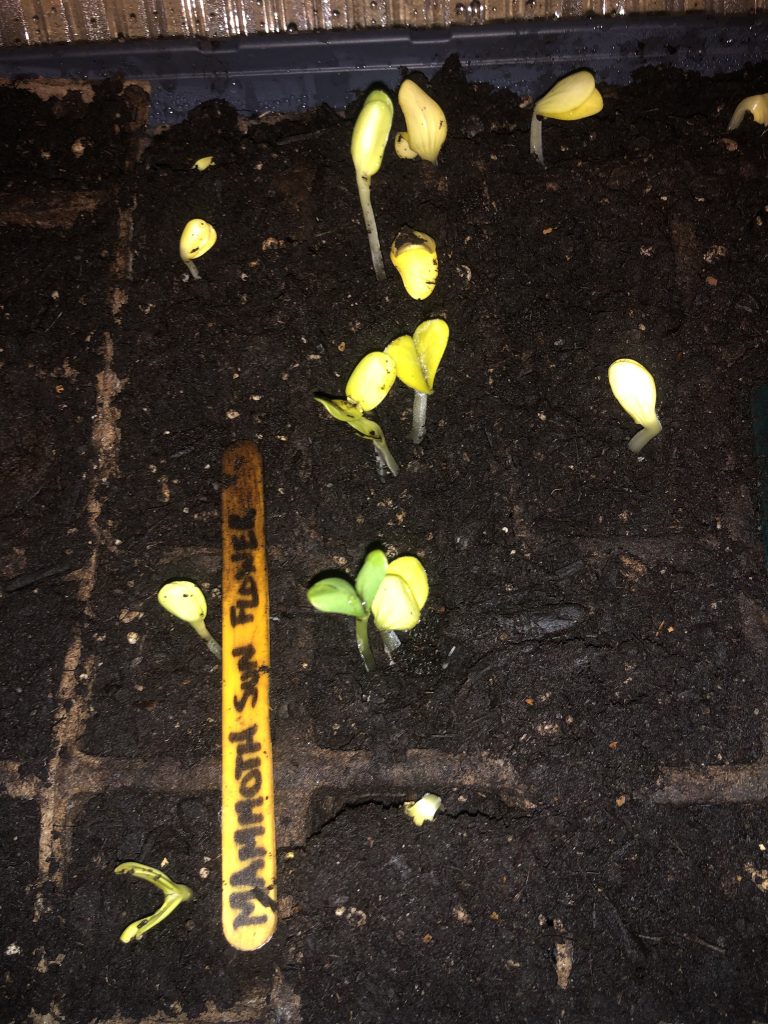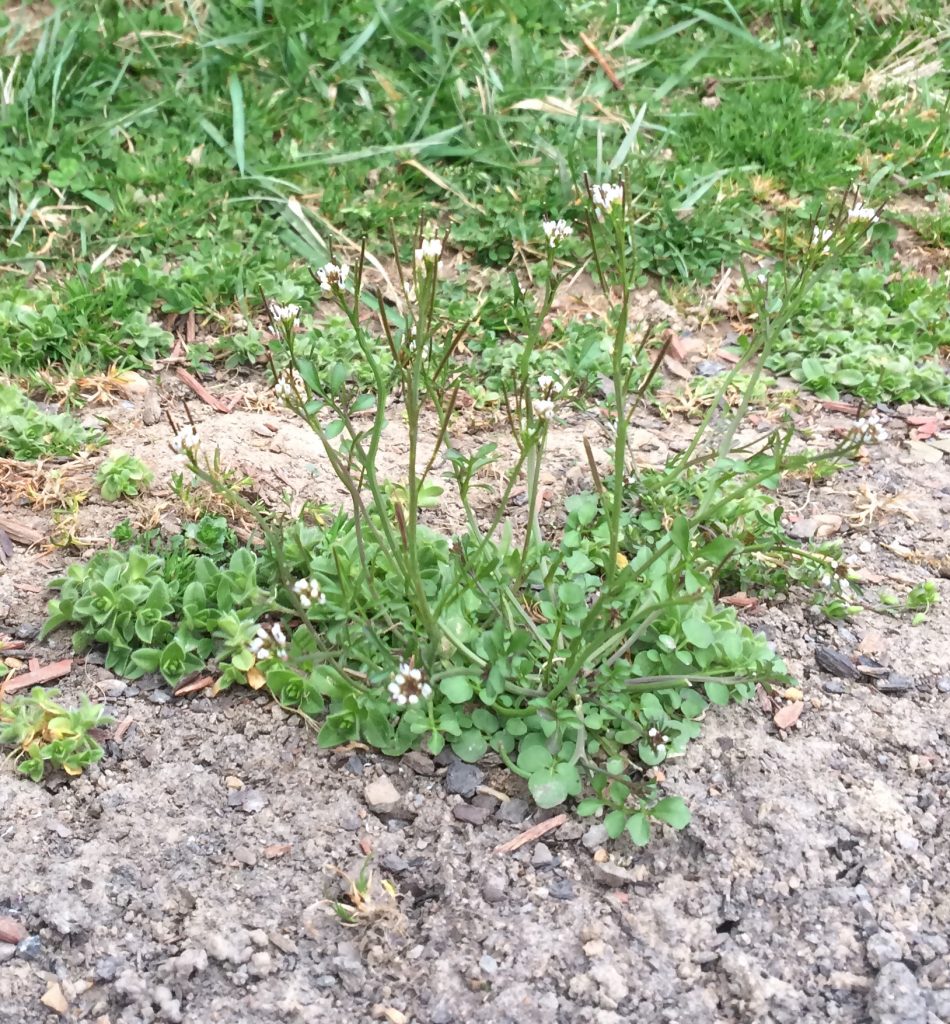Ask the Gardener: Yellow seedlings, wild onions, milkweed and more
Posted on: April 22, 2019 | Written By: Doug Oster |
Gardening editor Doug Oster gets asked a lot of questions. A lot. And he doesn’t mind offering gardening advice. But rather than just limiting those answers to the person who asked, we thought it might be a good idea to share that wealth of knowledge with everybody.
There are three ways to send in your questions:
- Email askdoug@535mediallc.com
- Submit your question on our “Your Garden” section of our site
- Send us a message on Facebook.
(The questions may be lightly edited for grammar/clarity/etc.)

Question 1: Yellow seedlings
Kasey: Just curious if you have any insight on why my seedlings are mostly coming up yellow? I used the seed starter mix that you suggested at an event at Soergel’s. I have them on a heat mat inside. They just popped up yesterday and today. Too much water? Too warm?
Also don’t mind the pods with like three seeds in one … my 2-year-old was helping me plant! Is it better to pull them out now to prevent over crowding and take it as a loss or wait until they grow bigger and try to separate?
Doug: Do you have the container under a light source? They need bright light to color up. Now that the seeds have sprouted, get them off the heat mat.
They can be thinned and moved now or in a week or two when they get their true leaves.
Question 2: Wild onions
Beverly: To weed my junipers on a hillside, I have to sit among them. Any advice on getting rid of the wild onions that seem to be symbiotic with those junipers?
Doug: I’m sorry to say you’ll never get rid of those onions. The good news is that those onions are only really a problem in the spring. I would just run a string trimmer over the tops of the junipers for a couple of weeks to remove the onion growth.
Question 3: Planting milkweed seeds
Chas: Could you give us a CliffsNotes version of stratification of milkweed seeds? I’m planting your Save the Planet garden but I have zero experience with milkweed.
Doug: Stratification is needed on many different types of seeds. It’s a way to mimic nature. In the case of milkweed, the plant flowers, sets seeds and then drops them. They need that winter period of cold and thaw to germinate again in the spring. Here’s how I do it. Place your milkweed seeds in a damp paper towel and then inside a Ziploc bag. Label the bag with the date and type of seed. Store the mixture in a refrigerator for about a month, then it’s ready to plant.

Question 4: Bittercress
Jim: I would rather talk to you about flowers and shrubs but this spring it has been hard not to notice this invasive weed, I think it is called Buttercream weed?
Some of my gardener friends have also noticed this weed in abundance this year. And when you attempt to pull out the weed, it seems to deposit more seedlings from the top little white buds. Have you also noticed this weed this year more than usual? I am assuming it has something to do with the type of winter/spring conditions we had this year.
Doug: Welcome to the wonderful world of bittercress. The good news is that it’s edible. The bad news is that there’s more out there than we could ever eat.
Some years we get more than others. The key to controlling it is to try and get to it before it sets seed. Which means right now. It pulls out pretty easy.
Question 5: Moving daffodils
Roy: I have daffodils blooming, and I wanted to dig them up, divide and replant them. I also have two hydrangea plants that need to be moved, and the daffodils are somewhat intertwined with the hydrangea’s roots. Can I move the daffodils as soon as they are done blooming and move the hydrangeas at the same time, trying to separate the daffodil bulbs from the hydrangeas roots?. Right now the hydrangeas are not leafing out.
Doug: Daffodils are moved and split as soon as they are done blooming. Maybe you can gently pull or dig them out of the hydrangea. It can be moved now, but if it’s a variety that’s bloomed for you reliably, you might interfere with flowering for this season. If blooming is not a concern, it would be fine to move the hydrangeas now.
Question 6: Sun-loving plants
Janet: I am new writing to you. I have a black thumb and it seems like I grow rocks! I have a very small front porch that gets shade all morning and intense sun in the afternoon. What can I put in planter boxes around the ledge? I really need help because I kill every plant I get (except for a bamboo plant I am growing)!
Doug: I would recommend sun lovers like portulaca and something called ice plant. They are indestructible and available at most local nurseries. You could also grow some herbs in containers there.
Question 7: Asparagus
Barry: I have a question on asparagus, hopefully you can help. I put 3-year-old asparagus in three years ago so now I have 6-year-old asparagus and I’ve been very careful on not overharvesting them over the years. Last year I had some tasty asparagus. Well, long story short, two years ago I noticed red berries on some of the asparagus and didn’t think anything of them and just let them be. At the end of last season I noticed baby asparagus popping up. It dawned on me that those berries were seeds. Now this year they are popping up everywhere. The original big ones are just beginning to crack the ground. My question to you is should I cut the small baby asparagus or let them grow out? I don’t want the baby ones stealing nutrients from the big ones or should I just let them grow out? They are in a raised bed thats 4 x 12 feet. I just don’t want the original ones I planted six years ago to not get what they need because I put a lot of work into the original asparagus roots.
Doug: That’s a great problem to have and if it was me, I’d let the little seedlings take hold. As the bigger plants get older, they can get tired and these sprouts will take over in several years. I’d also be tempted to feed the bed a good, granular organic fertilizer like Gardentone from Espoma. It’s inexpensive, easy to find and will keep all the shoots thriving.
Now when the asparagus is ready send me another email and I’ll be over for dinner!
Previous mailbags
Tithonia seeds, bulb auger, elephant ears and more
Soil testing, protecting bulbs, fig tree care and more
Peach tree, invisible bugs, lawn bulbs and more
Orange azalea bush, oak tree and more tree questions
Moles, grafting tomato plants, Southern plant and more
Rehoming daylilies, butterfly bush, amaryllis and more
Apple tree lichens, kiwi plant, growing pea sprouts and more
Planting grass, starting tomatoes, zinnias and more
Blackberry bush, garlic sprouts and a gardenia tree
Starting peppers, fungus flies and pear tree pruning
Poison ivy, amaryllis troubles, tomatoes and more
Memorial gardens, orchids and tomato advice
Unknown plants, Christmas cactus and raised bed gardens
Christmas cactus, gnats, shredded leaves and more
Leaf size, no-light plants and grubs
Canna lilies, elephant ears, daffodils/garlic and more
Hibiscus care, tomato seeds, daffodils and succulents
Early garlic, pencil holly, hydrangeas and tree locations
Bellflowers, sweet potato vine, deer/garlic and more
Lemon tree, Knockout roses, soil repair and more
More from Everybody Gardens
See also, Reflection On The Legacy Of Planting